Archaeologists excavating Pompeii's Porta Sarno necropolis uncovered a relief featuring a pair of statues, a woman and a man standing side by side who were believed to be a couple.
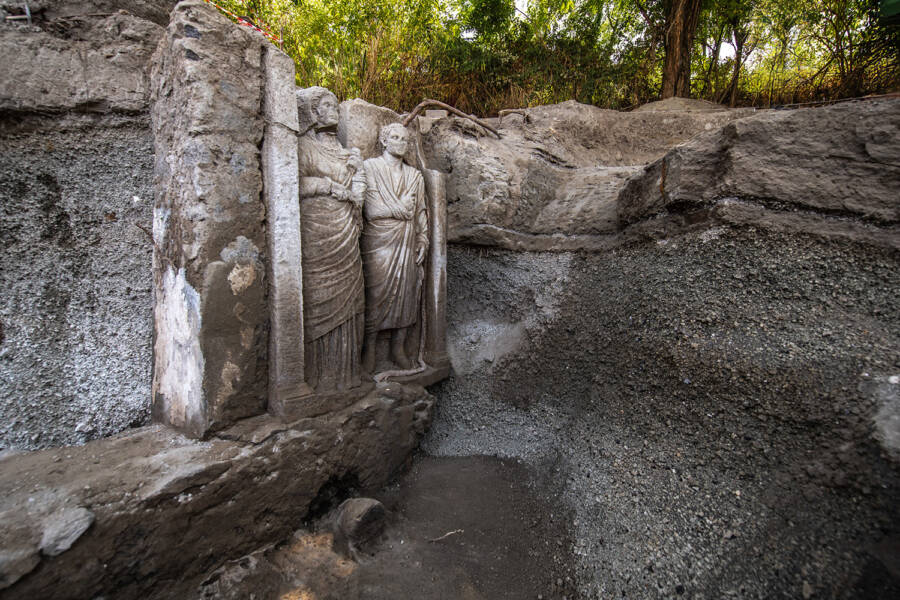
Pompeii Archaeological ParkThe large funerary relief of a woman and a man discovered in the Porta Sarno necropolis in Pompeii.
Today, Pompeii is best known for the devastating 79 C.E. eruption of Mount Vesuvius that buried the city under layers of rock and ash.
However, Pompeii’s history stretches far beyond its sudden and catastrophic end. During ancient Rome’s Late Republic period (200 B.C.E. to 27 B.C.E.), the city thrived as a hub of trade, culture, and religion, thanks to its fertile land and strategic location near the Bay of Naples.
Among the many Romans who made a life there was a pair, believed to be a young married couple, whose funerary monument was recently unearthed in the city’s Porta Sarno necropolis.
Though heavily damaged by earthquakes and the 79 C.E. eruption, the monument still features its near-life-size relief of the couple, with intricate details of their clothing, accessories, and physical features still remarkably intact.
The details from the relief have revealed key facts about Roman social and religious life, creating new opportunities to better understand day-to-day life in ancient Pompeii.
Uncovering An Ancient Funerary Relief In Pompeii’s Porta Sarno Necropolis
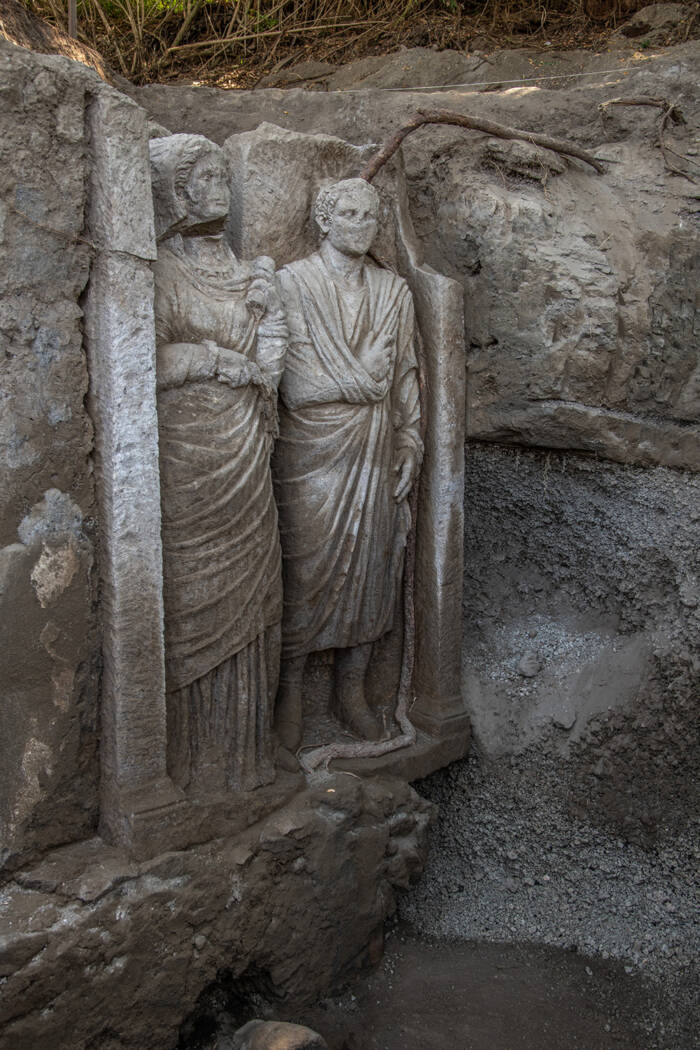
Pompeii Archaeological ParkThis nearly life-size relief was carved from volcanic stone.
In July 2024, archaeologists working under the “Investigating the Archaeology of Death in Pompeii Research Project” excavated two funerary sites in northeast Pompeii: Porta Nola and Porta Sarno.
Originally excavated in 1998, the Porta Sarno area held promise as a significant burial site in the ancient city. Since its discovery, the site has been found to contain more than 50 burials, often marked with stelae and funerary monuments.
One such burial featured a large wall and a funerary monument: a life-size relief sculpture of a presumed married couple from the Late Republic period.
Under the sculpture, archaeologists found several niches attesting to the presence of a large tomb underground. Researchers believe that the tomb sustained severe damage during the earthquakes before the eruption of Mt. Vesuvius in 79 C.E., leading to its collapse and partial burial under layers of pumice stone.
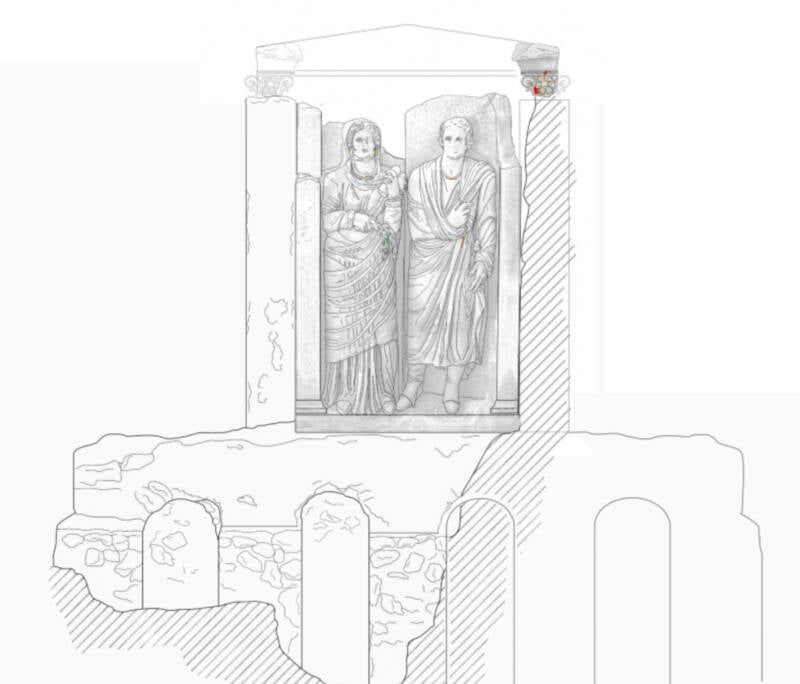
Pompeii Archaeological ParkA recreation of how the relief would have looked on top of the tomb during antiquity.
During the first century C.E., the tomb likely stood over five feet tall, with a large step at its entrance for underground access to the burials. At its top stood the relief sculpture of the couple, with the male figure standing at 5’7″ and the female standing at 5’8″.
While the tomb itself was impressive, it was the artifacts within it that revealed the most fascinating information about the married couple and their life in Pompeii.
How This Funerary Relief Sheds Light On Religion In Ancient Rome
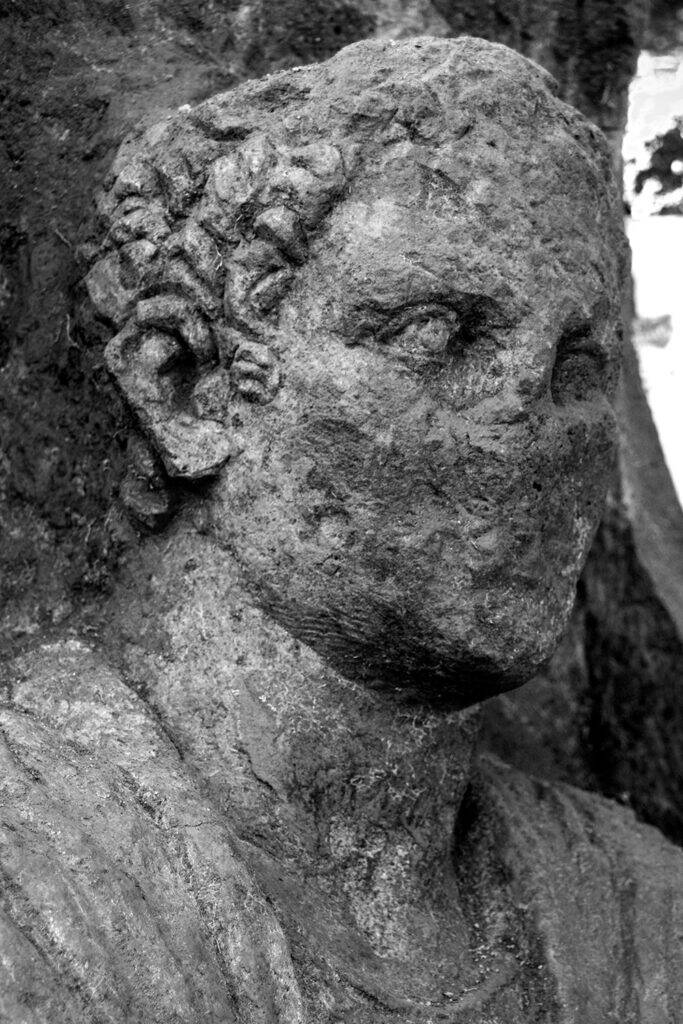
Pompeii Archaeological ParkThe male figure shows signs of high status and wealth.
As anticipated, an excavation of the funerary monument unearthed several invaluable artifacts and revealed intriguing information about the daily lives of ancient Romans in Pompeii.
While studying the male figure in the relief, archaeologists discovered he was wearing a toga — a symbol that the man was a Roman citizen. Additionally, his footwear, called calcei patricii, identified him as a member of the upper class.
His curly hair is also a sign of his social status, as both upper-class men and women curled their hair with different techniques to achieve a look that was considered respectable and fashionable. His wealth, apparent through his clothing and the ring on his finger, appears to be the main focus in his relief.
However, his female companion’s relief tells a more nuanced story. While she does showcase wealth, such as in her elaborate dress, jewelry, hair, and footwear, the most intriguing part of her relief is her accessories.
Within the figure’s right hand is a handful of laurel leaves, an item often used by priests and priestesses to purify and bless spaces during rituals. The presence of these leaves in the relief overwhelmingly points to the female figure being a spiritual leader.
Based on the lunar-inspired amulet she wears, called a lunula, archaeologists believe the woman may have belonged to the cult of Ceres, the Roman goddess of agriculture and fertility.
In ancient Roman mythology, Ceres is strongly affiliated with the Moon, as the lunar cycles coincided with those of the female body and of the harvest season. Many young Roman women wore a lunula as a form of protection and good luck before their marriages.
Since it was uncommon to see married women with this type of iconography, researchers believe the female figure in the relief was likely a priestess in the cult of Ceres.
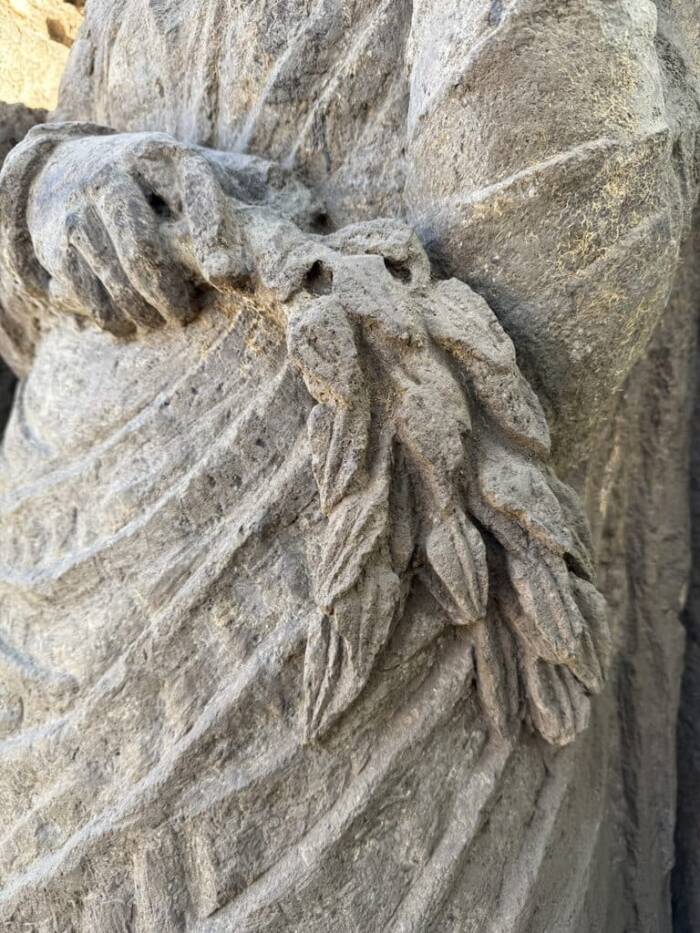
Pompeii Archaeological ParkA female figure holds an aspergillum of laurel leaves, an item used to purify and bless spaces during rituals.
This finding is one of only a handful of examples of Roman women working as priestesses in Pompeii. Typically, Roman women worked primarily in the domestic sphere, controlling the affairs of their homes and families.
However, some women found influence in society by training as priestesses. Through this work, they maintained a level of power comparable to that of their male counterparts.
“Being a priestess was the highest social rank to which a woman could aspire. Priestesses had an important role in the public sphere. They had a position of power far removed from other women and very similar to male priests,” the Pompeii Archaeological Park wrote in a study about the funerary monument.
And while priestesses in the cult of Ceres were overwhelmingly members of the common class, this new finding has reshaped what researchers know about religious life and its intersection with social status in Pompeii. As excavations continue, the potential for more groundbreaking discoveries awaits.
After reading about this Pompeiian funerary relief, see 39 photos of Pompeii’s bodies frozen in time. Then, read about the graffiti left behind at Pompeii.





